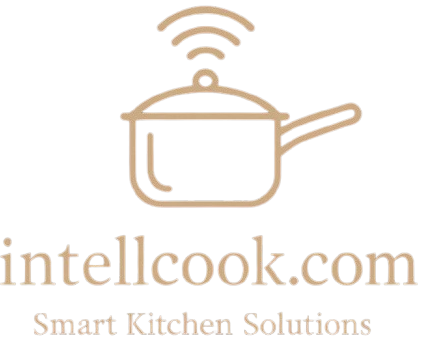Every workplace has the same challenge: endless repetitive tasks that eat away at valuable time. Employees often lose hours each week on tasks that could be handled more efficiently with the right tools. That is where automation tools for productivity step in as a game changer. These tools take over repetitive processes, streamline communication, and provide clarity across projects so teams can focus on meaningful work rather than routine tasks.
In this review I will walk you through the core categories that matter most in today’s workplace. From project management to communication, workflow integration, document handling, and analytics, you will see exactly how these tools drive efficiency. By the end, you will know which types of tools offer the best value and how to decide which fit your team.
Why Use Automation Tools for Productivity?
The primary reason businesses adopt automation is efficiency. A manual process that once required an employee’s full attention can now be completed in seconds by a digital tool. That difference translates into significant time savings and measurable improvements in output.
Cost reduction also plays a major role. With workplace productivity software, companies avoid hiring extra staff for repetitive administrative tasks. Errors also decline when automation takes over because systems are designed to follow rules consistently. That reduces the need for rework and creates smoother workflows.
Another powerful benefit is better collaboration. Automated reminders, shared dashboards, and consistent communication channels ensure everyone stays on the same page. Teams spend less time searching for updates and more time delivering results.
Best Categories of Automation Tools That Boost Work Productivity
Task & Project Management Tools
The foundation of every productive workplace is organized project management. Task automation apps like Asana, Trello, and Monday.com simplify scheduling, deadline tracking, and team coordination. Instead of manually assigning tasks or sending constant reminders, these tools automate the process and keep everything visible in one place.
When projects grow complex, automation ensures no detail slips through the cracks. Teams gain clarity on priorities, deadlines stay visible, and leaders can track progress without extra check-ins. That level of organization directly improves productivity.
Communication and Collaboration Automation
Messages and updates flood most workplaces daily. Without structure, communication becomes overwhelming. Tools like Slack and Microsoft Teams reduce that noise by introducing automated alerts, reminders, and bot integrations.
These platforms help employees share updates instantly, tag relevant people, and even connect with external apps for automatic notifications. Instead of sorting through hundreds of emails, teams access information in real time. The result is a sharp decline in wasted communication time and a big leap in efficiency.
Workflow Automation Tools
Some of the most powerful improvements come from workflow automation tools such as Zapier, Make, and IFTTT. These platforms act as connectors between apps, moving data automatically without manual involvement.
Imagine receiving a client form submission and instantly having the details sent to your CRM, project board, and Slack channel. What once required three manual steps now happens instantly. Automation like this keeps processes smooth, reduces mistakes, and allows employees to focus on higher-value work.
Document and File Management Automation
Manual file handling wastes countless hours. Searching for documents, sending approvals, or updating shared files all create unnecessary delays. Tools like Google Workspace and DocuSign bring automation into this space.
Google Workspace automatically saves and syncs documents across devices, while DocuSign eliminates the back-and-forth of paper signatures. For remote teams, this type of office automation software ensures documents stay secure, organized, and easily accessible. That structure saves time and prevents lost information.
Another Good Read: Best Travel Cooking Appliances In 2025
Analytics and Reporting Tools
Decision-making improves dramatically when teams rely on accurate data. Automated reporting tools like Power BI and Tableau remove the burden of manual data collection. With these tools, dashboards update automatically as new information enters the system.
Leaders access real-time insights without requesting spreadsheets from different departments. This form of productivity automation solutions provides clarity, speeds up decision-making, and highlights opportunities for growth much faster than manual reporting ever could.
How to Choose the Right Productivity Automation Tool
Choosing the right solution requires attention to several factors. Scalability should come first. A small business today may grow rapidly in two years, so the tool must expand without forcing a complete system replacement.
Integration also matters because the tool should connect smoothly with existing platforms. An isolated app adds complexity rather than reducing it. Cost plays a role too, since some automation tools come with subscription fees that rise as usage increases.
Ease of use is equally important. Employees adopt tools more willingly when the interface feels natural and intuitive. Finally, always check for strong security features and compliance with data regulations to protect sensitive business information.
Pros and Cons of Using Automation Tools at Work
Pros
- Saves time on repetitive tasks
- Reduces errors and increases accuracy
- Improves overall productivity and collaboration
Cons
- Requires initial training for staff
- Subscription costs may add up over time
- Creates reliance on software availability
FAQs
What are the best automation tools for work in 2025?
Popular options include Asana, Zapier, Slack, Google Workspace, and Power BI depending on your business needs.
Are automation tools expensive for small businesses?
Costs vary, but many offer free or affordable entry-level plans, making them accessible for smaller teams.
How do workflow automation tools improve productivity?
They connect different apps so tasks like data entry, notifications, and reporting happen instantly without manual effort.
Final Thoughts
The modern workplace demands efficiency, and the right automation tools for productivity provide exactly that. From managing projects to automating communication, streamlining workflows, handling documents, and generating real-time reports, these tools reshape how teams operate.
The key is to start small with one or two tools that solve your most pressing challenges. As you see the benefits, expand into other categories that fit your workflow. With the right balance, automation does not just improve productivity; it transforms the entire work experience.





